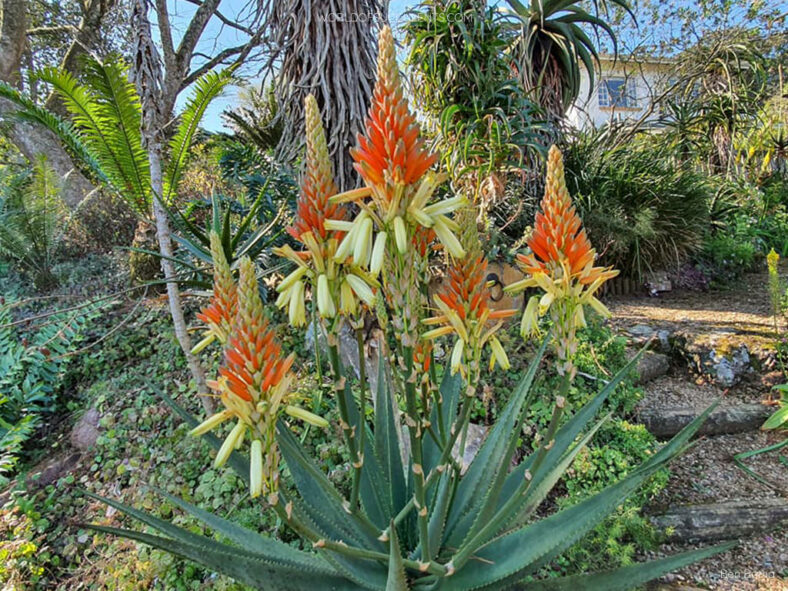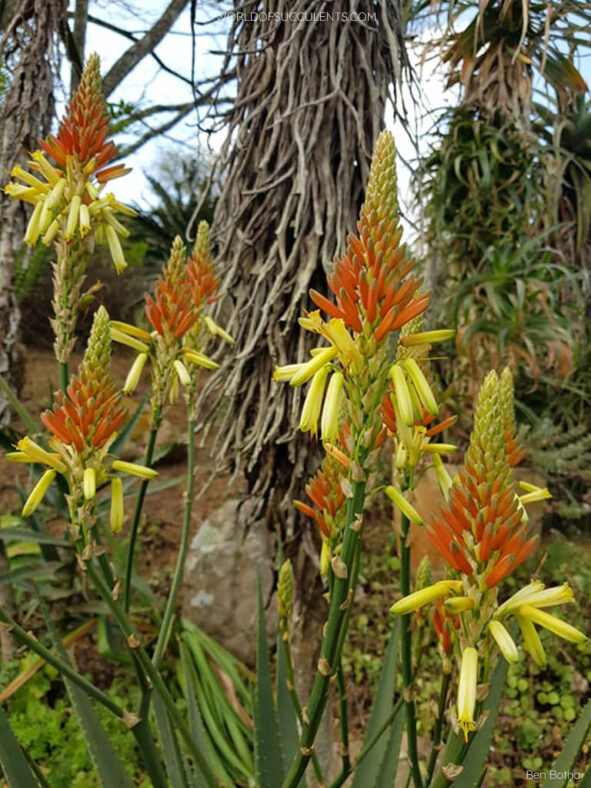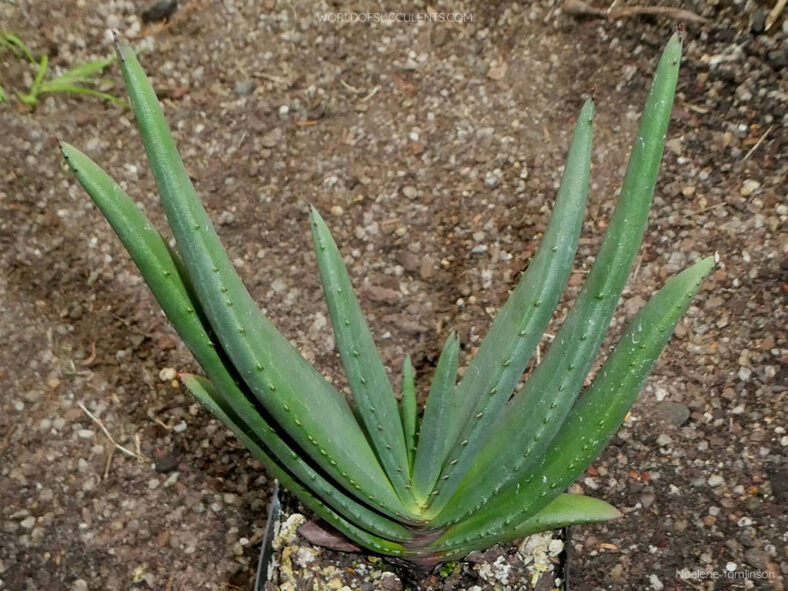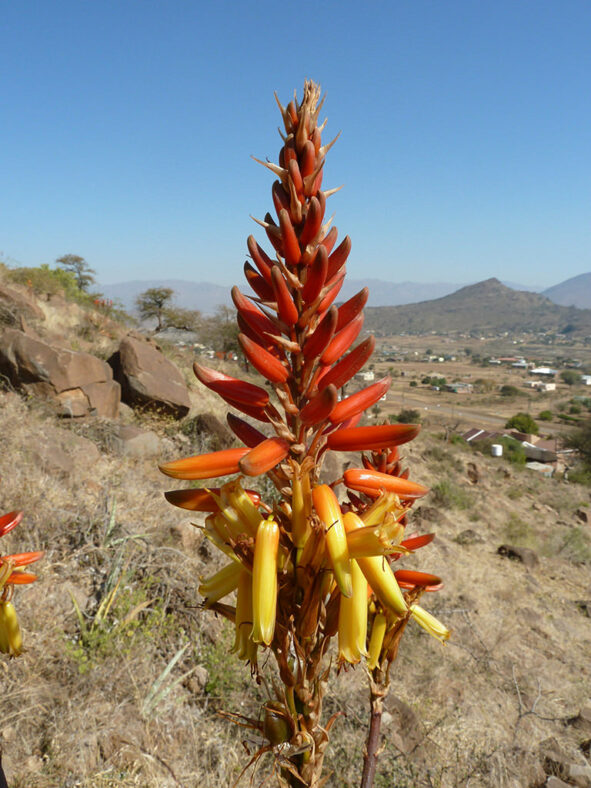Scientific Name
Aloe wickensii Pole-Evans
Common Name(s)
Wickens' Aloe
Scientific Classification
Family: Asphodelaceae
Subfamily: Asphodeloideae
Genus: Aloe
Etymology
The specific epithet "wickensii (pronounced wik-EN-see-eye) honors John Edward Wickens (1867-1949), a British horticulturist and plant collector, who, with Uys de Villiers Pienaar (1930-), found this species 25 miles (40 km) south of Pietersburg in 1914.
Origin
Aloe wickensii is native to South Africa. It usually grows on gentle slopes in bush country in the Limpopo province.
Description
Aloe wickensii is a beautiful succulent that forms a dense, solitary rosette of distinctly incurved, pale glaucous green leaves with small, deltoid, deep brown to black teeth along the margins. The rosette is usually stemless or has a very short stem and can reach a diameter of up to 4.3 feet (1.3 m). The leaves are lance-shaped with a flat upper surface and a convex lower surface, measuring up to 32 inches (80 cm) long and 4.8 inches (12 cm) wide.
The flowers appear in late winter in densely flowered, distinctively bicolored racemes in inflorescences that usually have 3 to 4 branches from about the middle. The inflorescence can grow up to 5 feet (1.5 cm) tall. The flowers are cylindrical and can reach 1.4 inches (3.5 cm) long. The conical racemes have dark reddish buds that open to bright chrome-yellow flowers. They can measure up to 8 inches (20 cm) long. The fruits are oblong capsules with dark brown seeds. They can grow up to 1 inch (2.5 cm) long and 0.5 inches (1.2 cm) in diameter.
Aloe wickensii is often listed as a bicolored form of Aloe cryptopoda. It can be confused with Aloe lutescens, which has bicolored flowers but a clump-forming habit.

How to Grow and Care for Aloe wickensii
Light: When growing A. wickensii indoors, place the plant near a window that receives plenty of bright indirect light. Rotate the pot once or twice a week so that all sides of the plant receive equal lighting. Outdoors provide light shade, especially during the hottest parts of the day.
Soil: Plant A. wickensii in a well-drained soil mix formulated for succulents or make your own. Drainage is essential because too much moisture around roots can cause root rot.
Temperature: This succulent grows at its best at temperatures between 50 and 85 °F (10 and 30 °C). When temperatures drop below 50 °F (10 °C), it is time to bring your plant back inside. A. wickensii can withstand temperatures as low as 25 °F (-3.9 °C). USDA Plant Hardiness Zones 9b to 11b, 25 to 50 °F (-3.9 to 10 °C).
Watering: This succulent does need regular watering but is very tolerant of drought conditions for short periods. Water deeply, but only when the soil is dry. Cut back on watering during the winter months. Do not let water stand in the rosettes.
Fertilizing: A. wickensii generally does not require fertilizer but may benefit from the extra nutrients. Feed with a fertilizer for succulents in spring and summer only, following the label directions.
Repotting: This plant is not particularly fast-growing and will rarely need repotting. To prevent it from becoming rootbound, repot it in the spring in a container a few inches larger in diameter every few years.
Propagation: Since A. wickensii has a solitary growth habit, it can be propagated only from seeds. For best results, sow seeds during the warm months.
Learn more at How to Grow and Care for Aloe.
Toxicity of Aloe wickensii
A. aculeata is not listed as toxic for people and pets.
Links
- Back to genus Aloe
- Succupedia: Browse succulents by Scientific Name, Common Name, Genus, Family, USDA Hardiness Zone, Origin, or cacti by Genus
Photo Gallery
Click on a photo to see a larger version.


